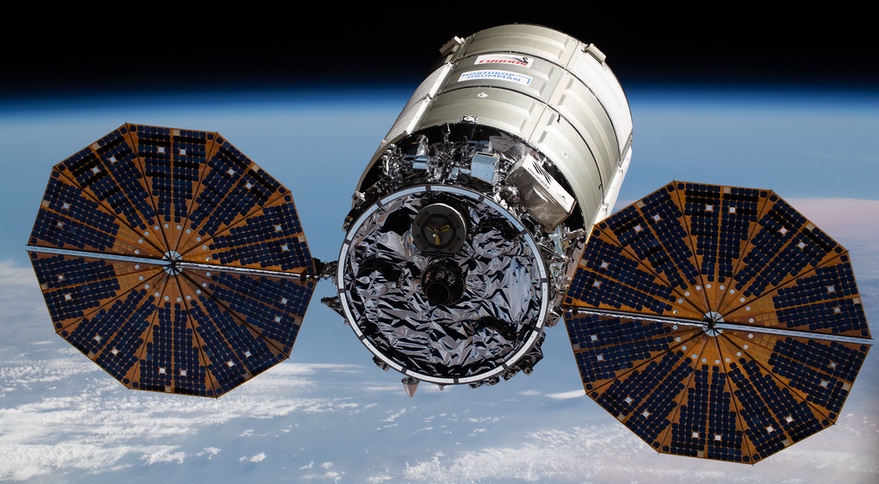Products You May Like
WASHINGTON — NASA is weighing whether it is safe for a Northrop Grumman Cygnus cargo spacecraft to approach the International Space Station because one of two solar array failed to deploy hours after launch Nov. 7.
The Cygnus spacecraft, flying the NG-18 mission for NASA, was scheduled to deploy its two circular UltraFlex solar arrays about three hours after launch on an Antares rocket from Virginia. The arrays produce 3.5 kilowatts of power for the spacecraft.
However, in a statement issued more than six hours after launch, NASA said that only one of the two solar arrays had deployed. “Northrop Grumman is gathering data on the second array deployment and is working closely with NASA,” the agency said.
According to the NASA statement, Northrop said the Cygnus had sufficient power to rendezvous with the station as planned early Nov. 9, allowing the station’s robotic arm to capture and berth it. NASA said it was “assessing” that information.
“It had an array that didn’t deploy, so Northrop Grumman is working on it right now to get that deployed, and of course we’re assessing the capture and berthing in case it does not deploy,” said Dina Contella, operations integration manager for the ISS at NASA, at a previously scheduled briefing Nov. 7 about a series of upcoming spacewalks at the station.
She stated the array goes through stages of deployment. “The team is trying to assess the data that they have and figure out their next steps,” she said, with Northrop leading those efforts.
If the array does not deploy before Cygnus arrives at the ISS, Contella said the station program would want to better understand the state of the array before proceeding with a capture. “If it ends up partially deployed, it could jiggle upon capture or berthing, or it could come open,” she said. “Those are the types of things and risk assessments we’ll be doing, if necessary, as it approaches.”
She added it’s possible that Cygnus could loiter near the station if needed to allow more time to study the solar array issue, although the specifics of how long it could do so depends on where in the approach NASA and Northrop decided to hold. “I am pretty hopeful that we’ll get the other array deployed.”
While the solar arrays on past Cygnus missions have deployed normally, a larger version of the arrays suffered a problem on NASA’s Lucy asteroid mission launched in October 2021. One of two of the circular arrays failed to fully deploy and latch into place shortly after launch. Engineers spent months studying the problem and made several efforts to fully deploy the array, which made some progress but did not get the array to latch. NASA said in June that, while not fully deployed, the array was stable and would generate enough power for the spacecraft.
